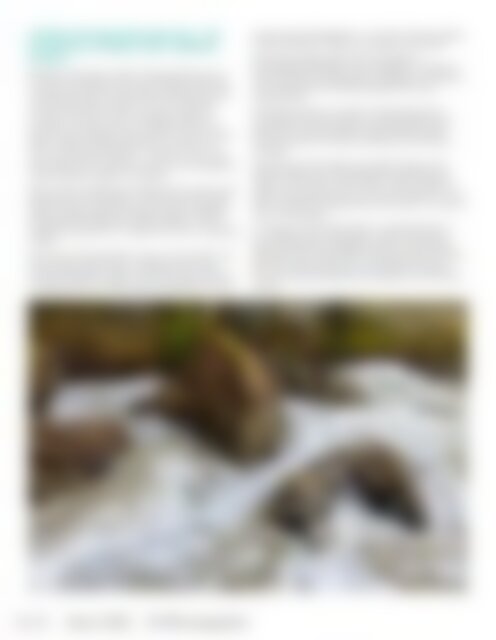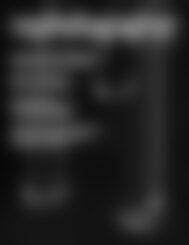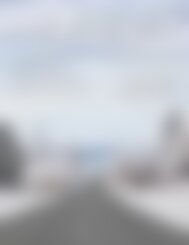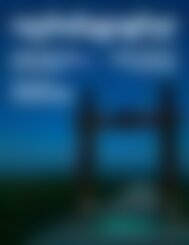NZPhotographer Issue 53, March 2022
As of December 2022, NZPhotographer magazine is only available when you purchase an annual or monthly subscription via the NZP website. Find out more: www.nzphotographer.nz
As of December 2022, NZPhotographer magazine is only available when you purchase an annual or monthly subscription via the NZP website. Find out more: www.nzphotographer.nz
You also want an ePaper? Increase the reach of your titles
YUMPU automatically turns print PDFs into web optimized ePapers that Google loves.
PUTTING THE GEAR INTO PRACTICE - ON<br />
LOCATION AT TUNNEL POINT, DUNEDIN,<br />
OTAGO.<br />
Richard Young and I spent a great afternoon at<br />
Tunnel Point before one of our wildlife workshops.<br />
I’d seen pictures of Tunnel Beach before but had<br />
never been there myself, so it was a real treat<br />
to have a few hours with the place mostly to<br />
ourselves. Access is down a steepish track to a<br />
spectacular headland that juts into the sea. From<br />
here, a series of steps leads into a tunnel, and<br />
down to the beach below – however, this is only<br />
accessible at low tide and can be very dangerous<br />
when the tide is high or incoming.<br />
With waves crashing over offshore rock stacks and<br />
lapping around boulders at the base of the cliffs,<br />
there is huge scope for doing all sorts of different<br />
landscape photography: either details, a stitchtogether<br />
panorama, or telephoto shots of crashing<br />
waves.<br />
There are some exquisite colours on the cliffs, with<br />
the orange-yellow rocks combined with water<br />
streaks and green algae. Combined with the everchanging<br />
tide, this offers great possibilities for the<br />
landscape photographer. Just watch those surging<br />
waves, and don’t leave your bag on the sand!<br />
The three images here show the range of<br />
photography possible at Tunnel Beach: a detail of<br />
rocks and the incoming tide, a telephoto of waves,<br />
and a panorama stitched together from five<br />
vertical shots.<br />
The photo below was taken at the base of the<br />
Tunnel Beach cliffs using my 18-35mm Nikkor lens.<br />
Obviously I used a slowish shutter speed to get<br />
the movement of the sea washing in around the<br />
boulders.<br />
This next shot (top right) was taken using my 70-<br />
300mm Nikkor lens. The telephoto allowed me to<br />
zoom in on the rock stack, and I used a cable to<br />
release the shutter just as the wave crashed in. This<br />
time, I wanted to freeze the wave action, so used a<br />
fast shutter speed.<br />
In the last shot (bottom right), I switched back to<br />
my 18-35mm lens, taking four vertical shots and<br />
later stitching them together in-post. This method<br />
allowed me to capture the wide seascape. On the<br />
left is the same sea stack in the previous image.<br />
The wet sand provided some reflection of the cliffs<br />
above.<br />
16 <strong>March</strong> <strong>2022</strong> <strong>NZPhotographer</strong>

















